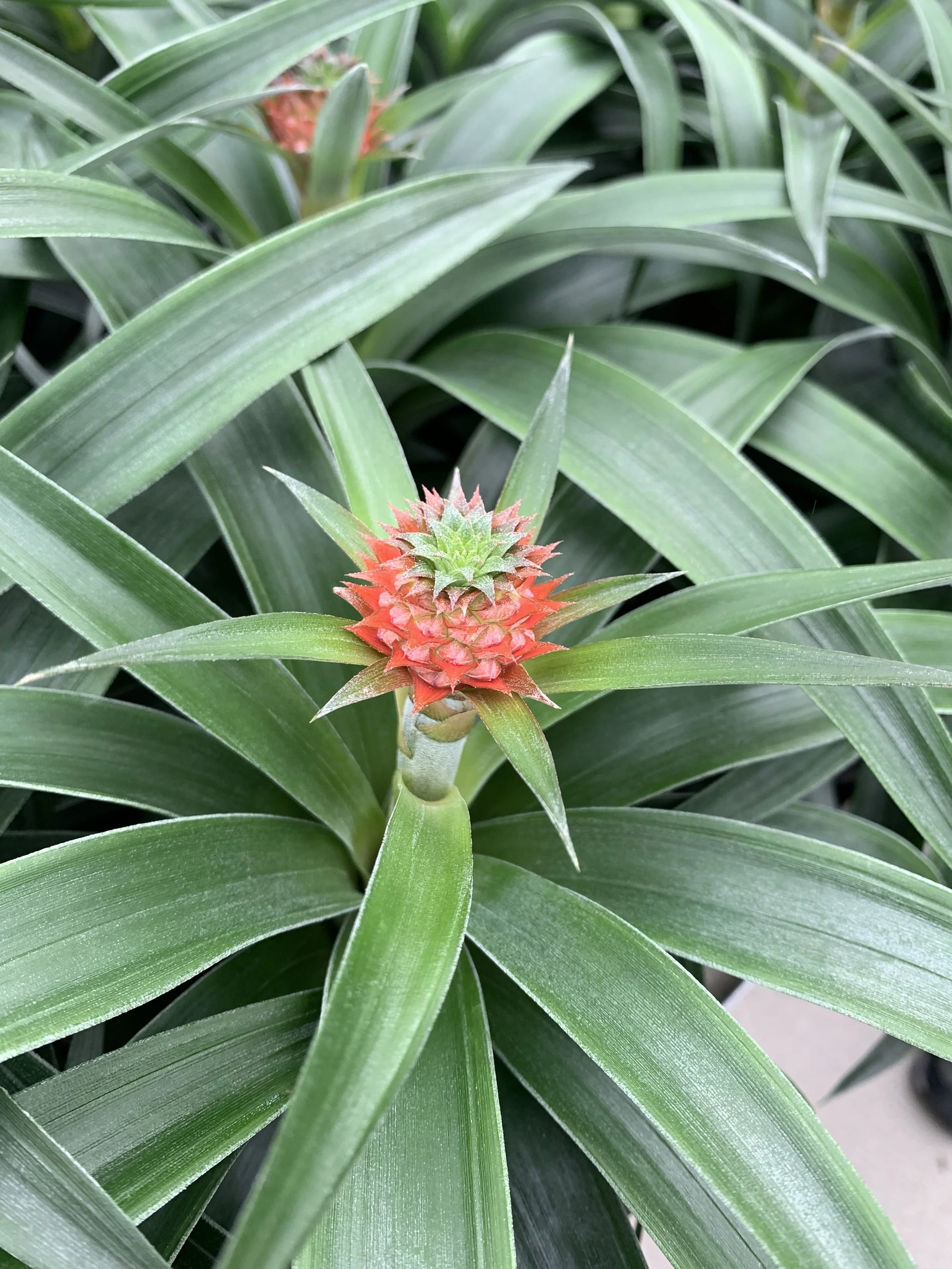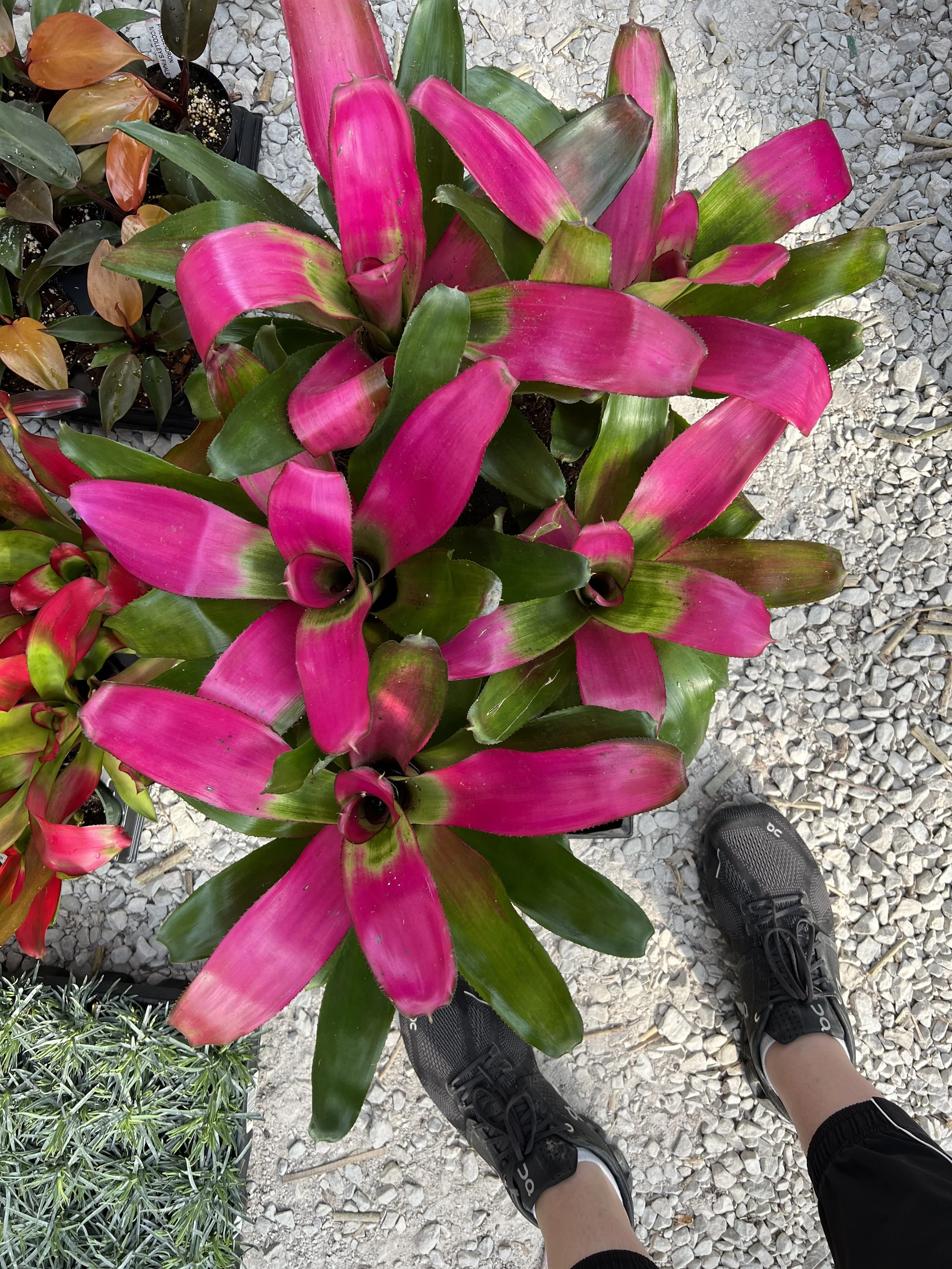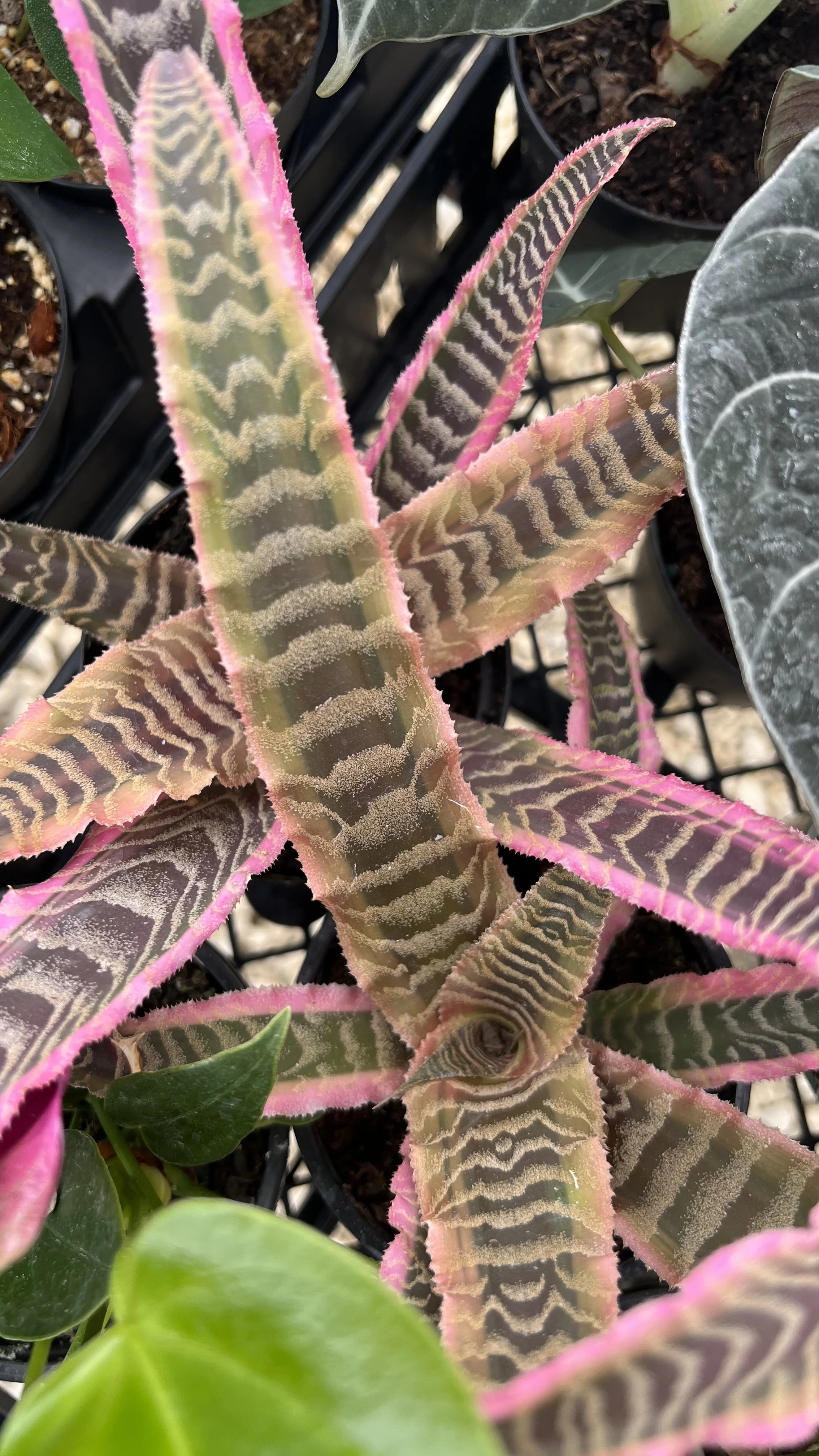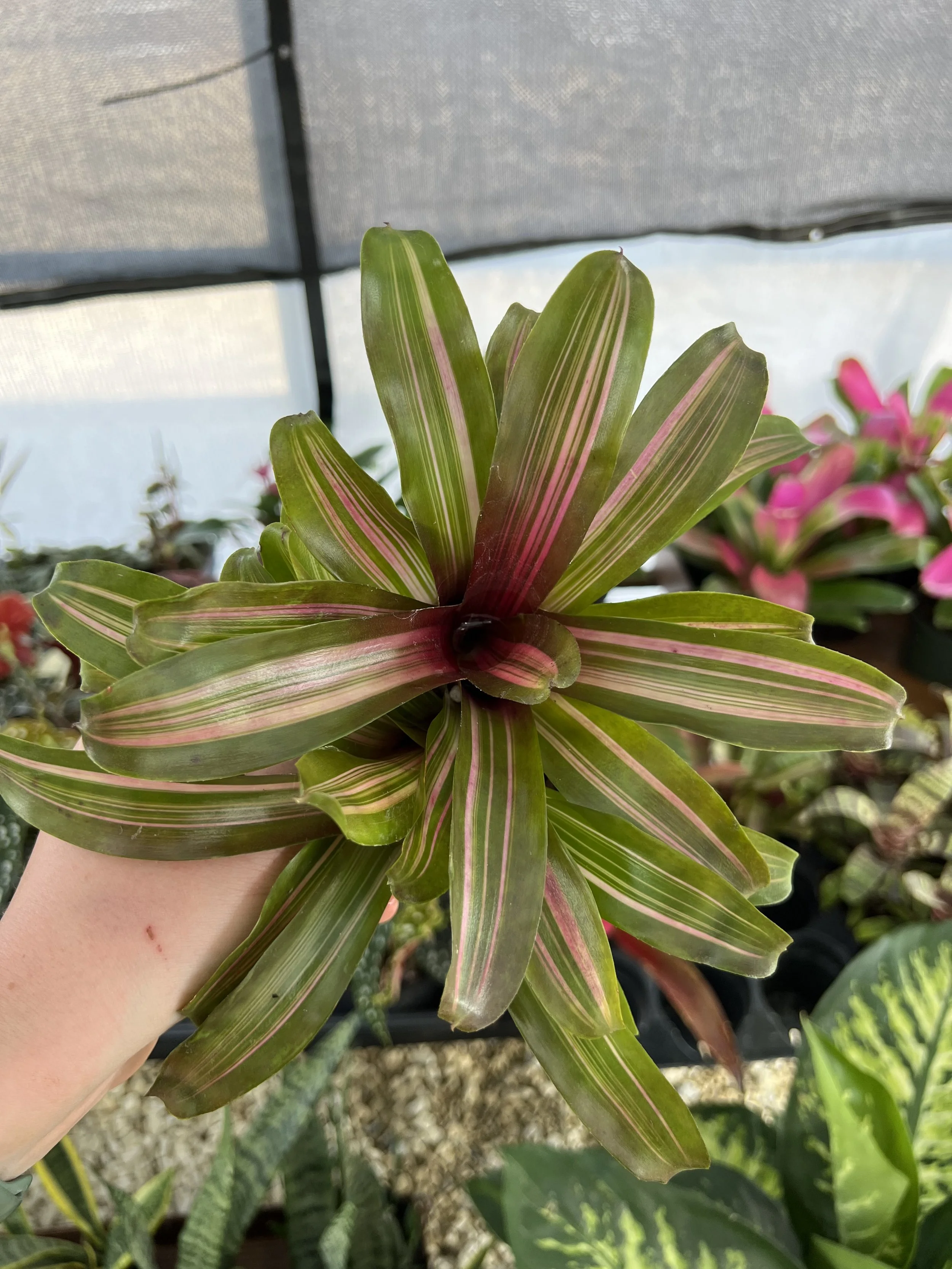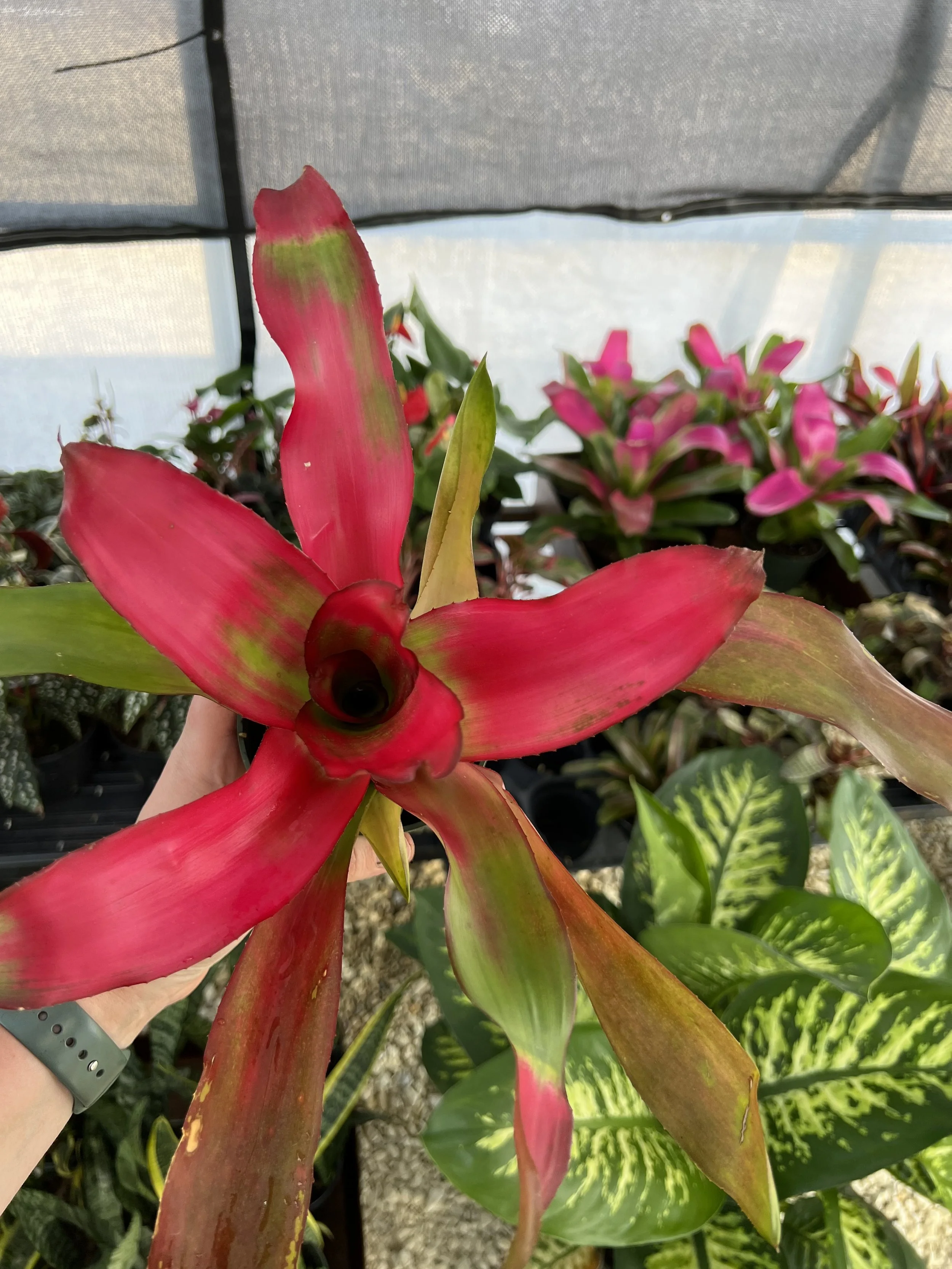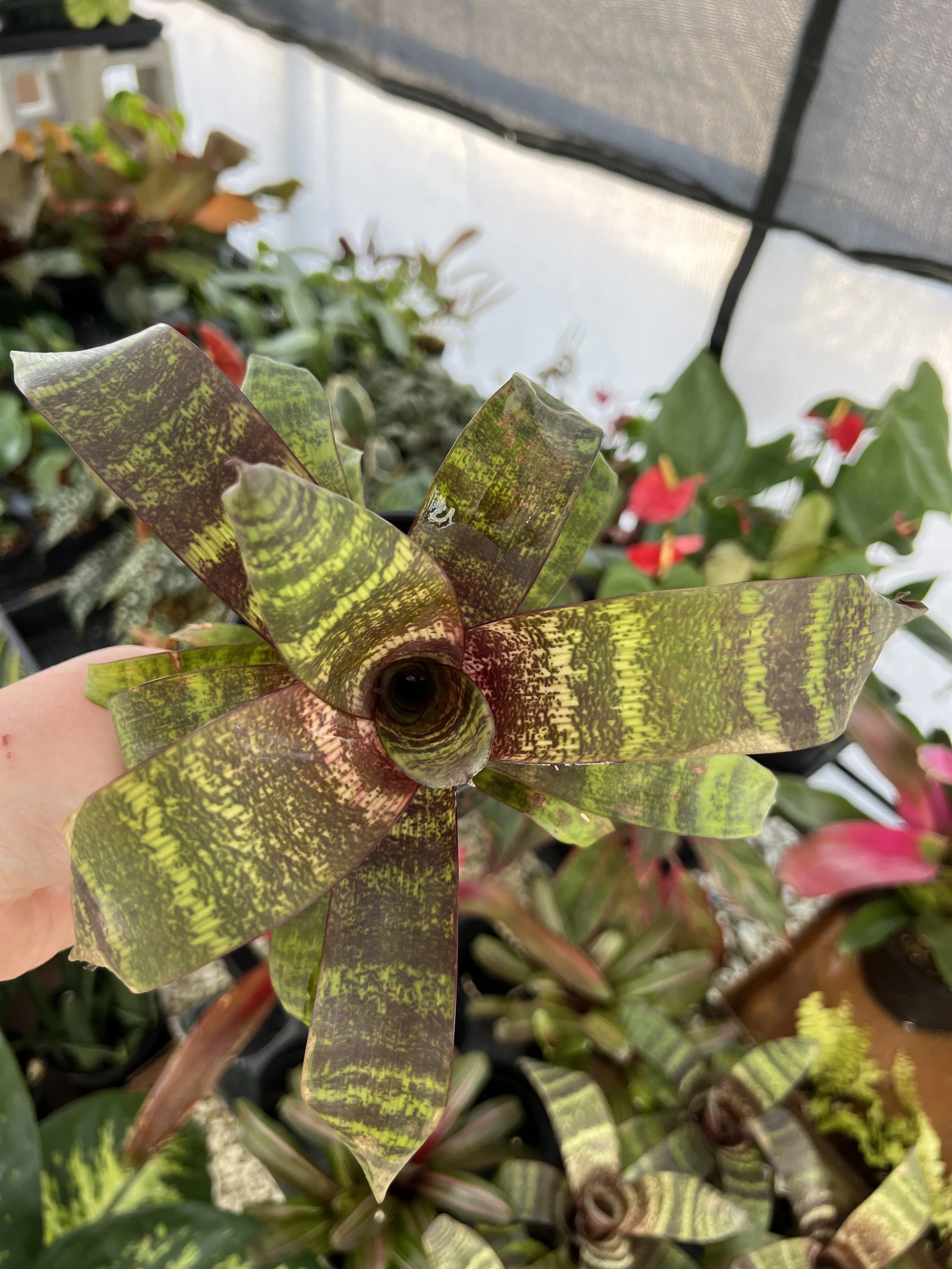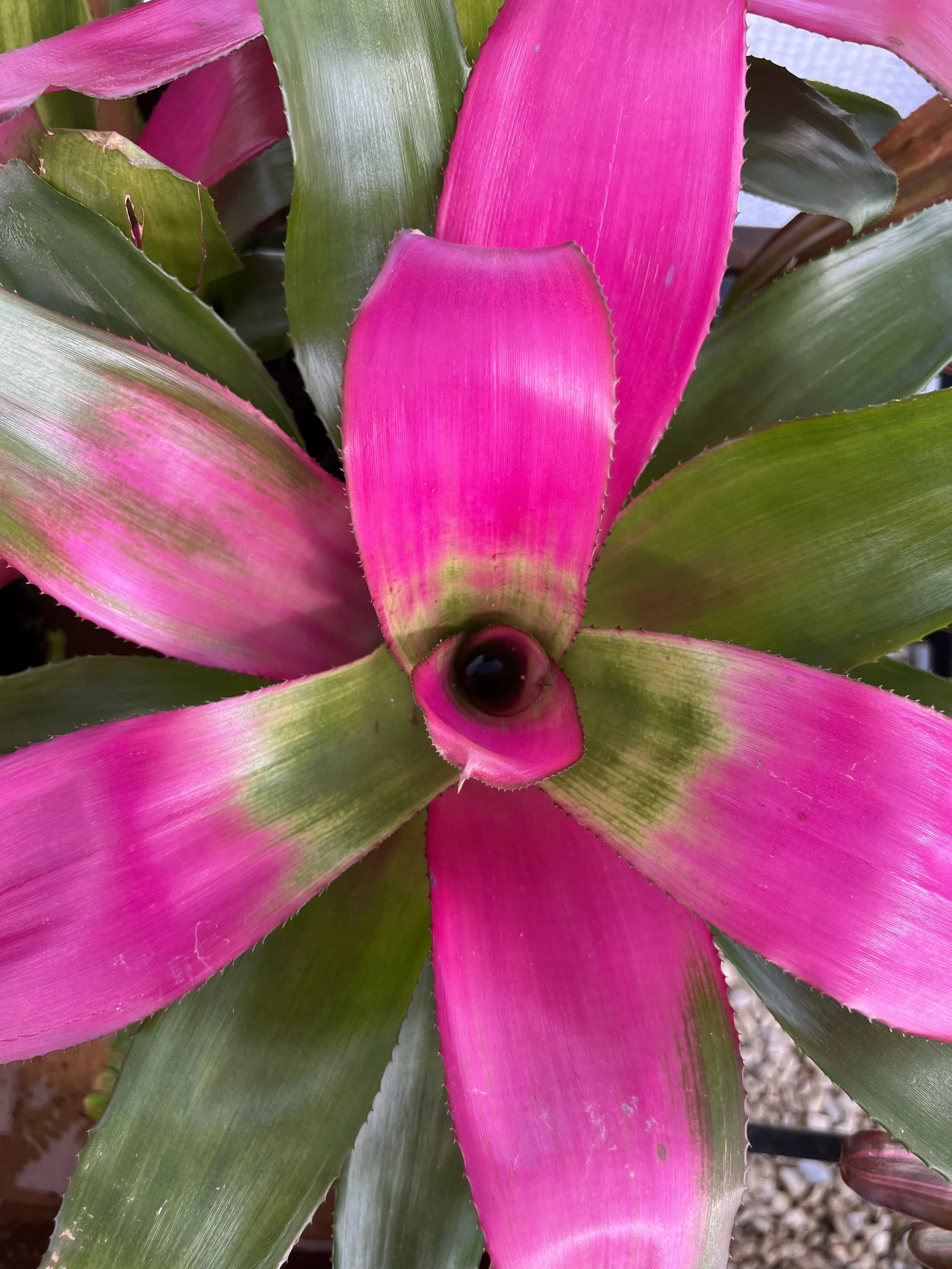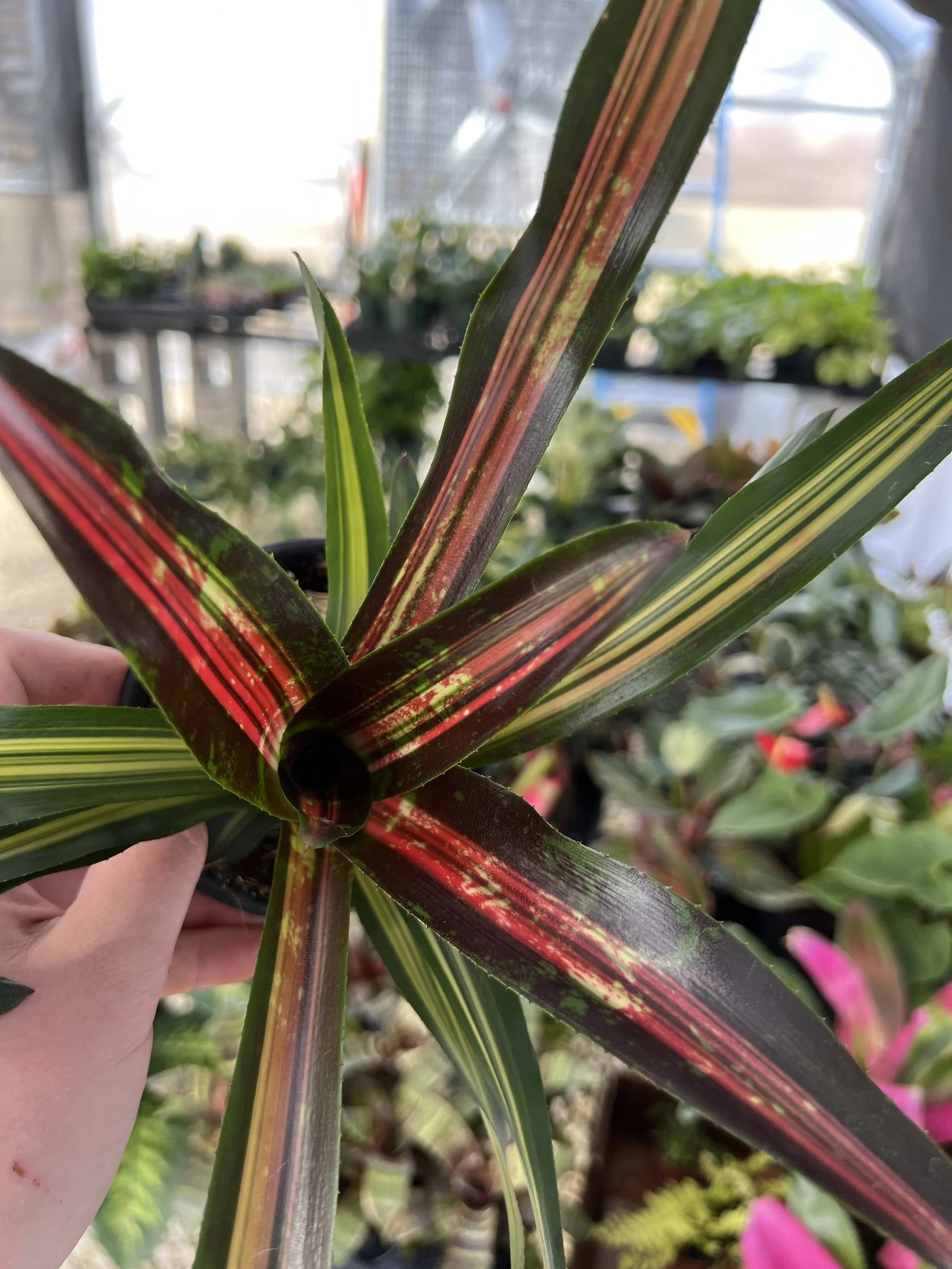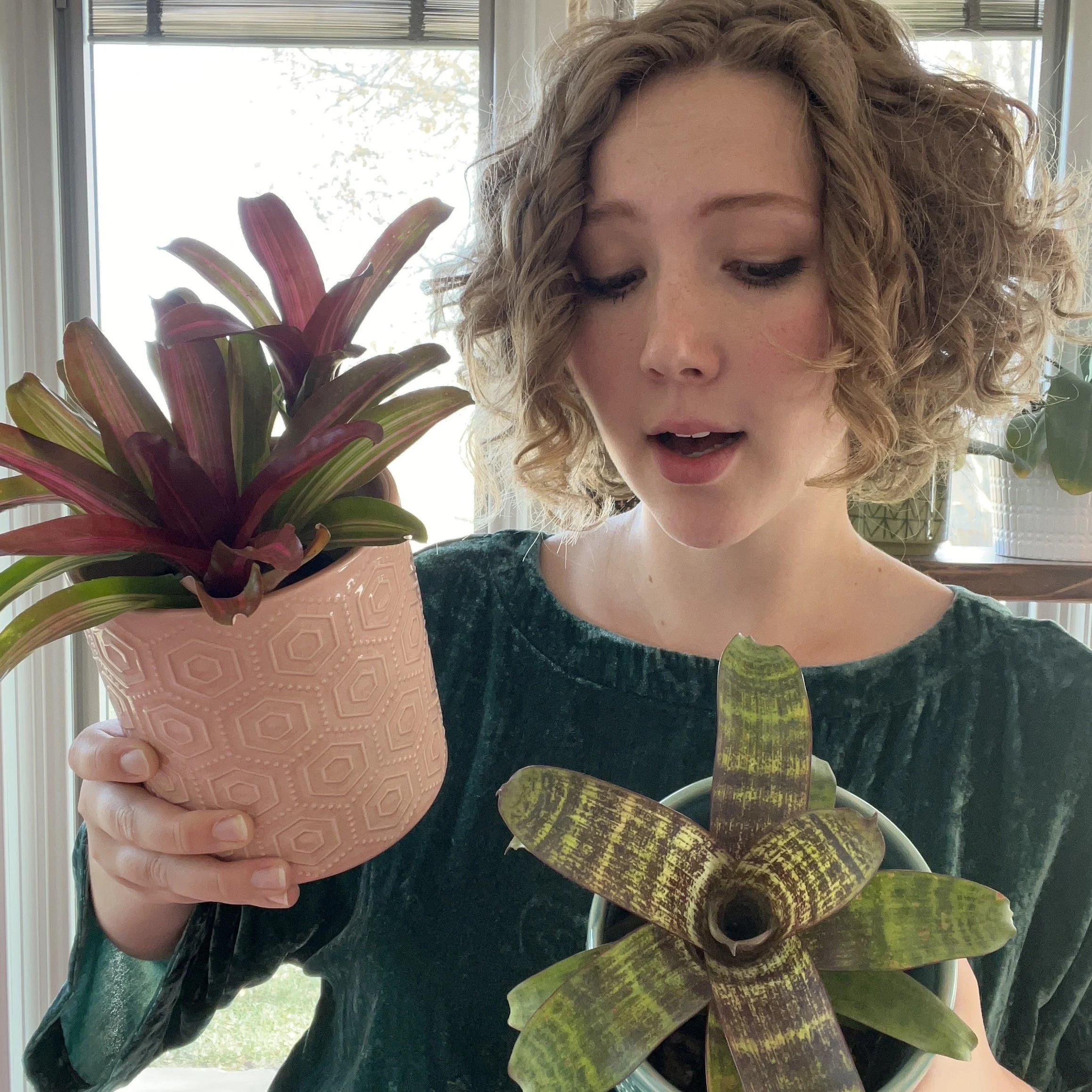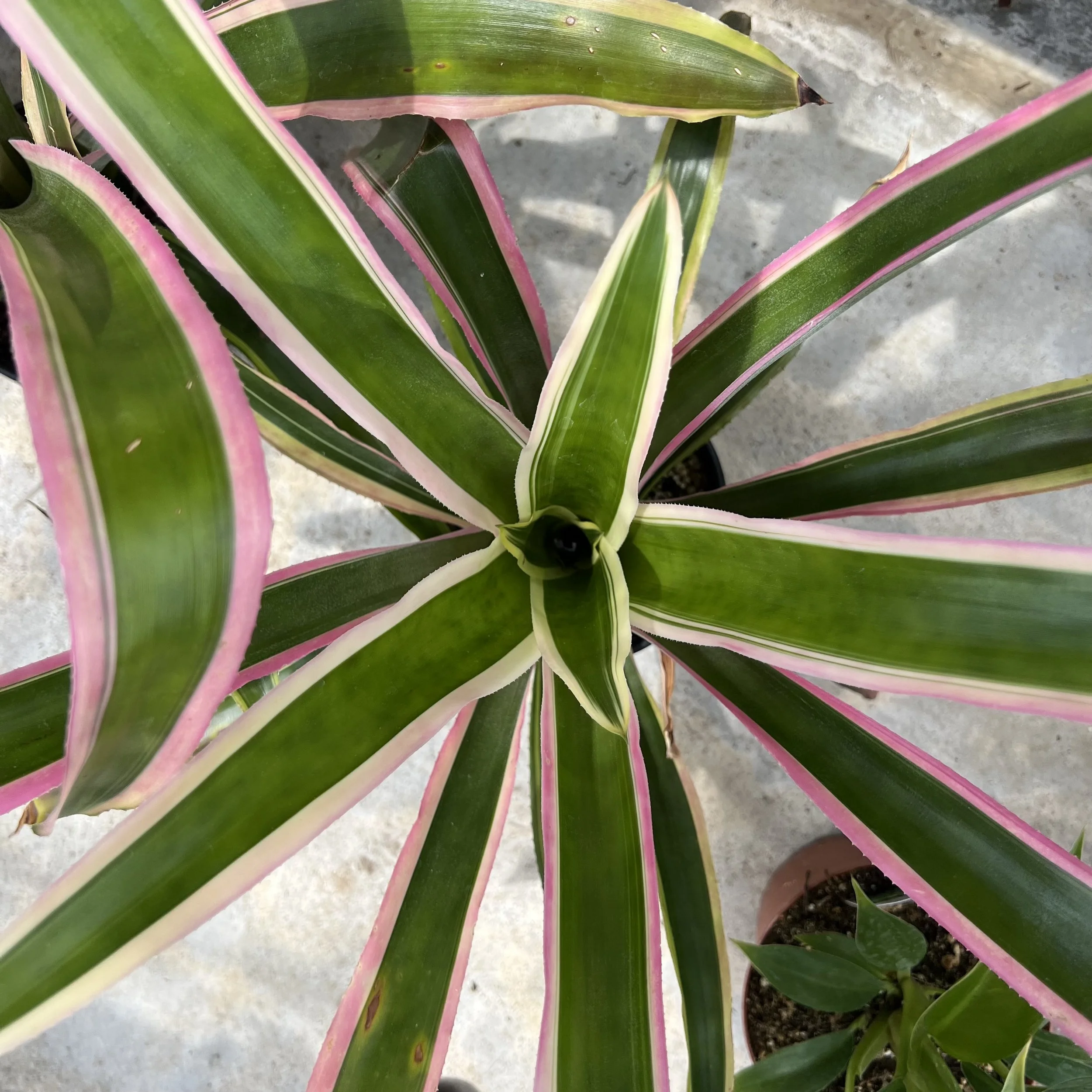
BROMELIADS
Guzmania | Aechmea | Neoregelia | Others
Family Bromeliaceae
-
Light: Bright, indirect light is best to avoid leaf scorch but to promote leaf coloring and flowering.
Bromeliads flower naturally by light accumulation. With too little light, the plants won’t flower or color.
Temperature: 65-85 F
Humidity: medium to high; avoid drafty areas
Low humidity causes leaf tip burn and curled leaves.
-
Water: Bromeliads are understory tropical epiphytes that grow from the branches of trees in nature. They have shallow root systems and collect water in their central “cups.” Water when you notice the top 2” of potting mix has dried (as that is where most of the roots reside) or when you notice the water level in the cup has diminished. Dry plants will curl their leaves and start to look dull in color.
Repotting: Repot every 2-3 years into a slightly larger container (1-2” increased in diameter not depth). Use a well-drained potting mix. The ideal mix is coir-based.
Fertilizing: Either…
Water Application: Incorporate fertilizer into your watering cycle once per month March through September. Dilute an all purpose fertilizer (20-20-20) by half OR use your favorite fertilizer rated for houseplant use in your water.
Slow Release: Incorporate slow release fertilizer pellets into the top inch of potting soil every 6 months. Apply the rate indicated for indoor plants on the label. If no recommendation for houseplants is present, apply 1/4 to 1/2 the listed rate.
-
The Bromeliaceae family boasts many famous plants including: pineapple (Ananas), and air plants (Tillandsia).
There are 80+ genera in the Bromeliaceae family. Commonly known bromeliad genera are as follows:
Aechmea
Vriesia
Cryptanthus
Neoregelia
Guzmania
-
(Listed in order of commonality…)
Mother plant death after flowering
Root decay caused by overwatering
Fungus gnats
Algae build-up in the cup
Lack of color from low light
-
Are bromeliads pet safe?
Yes
What is growing from the side of my plant?
Bromeliads often throw offshoot growths known as “pups.” These can be left on the mother plant or divided and roots in their own pots.
Why is my bromeliad dying? It was flowering and doing so well.
Some bromeliad species die after flowering once.
Have a more specific question?
I’m just a few clicks away.


